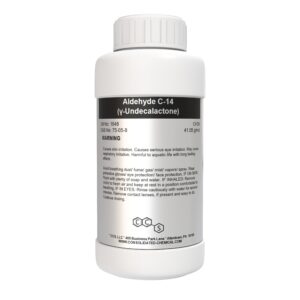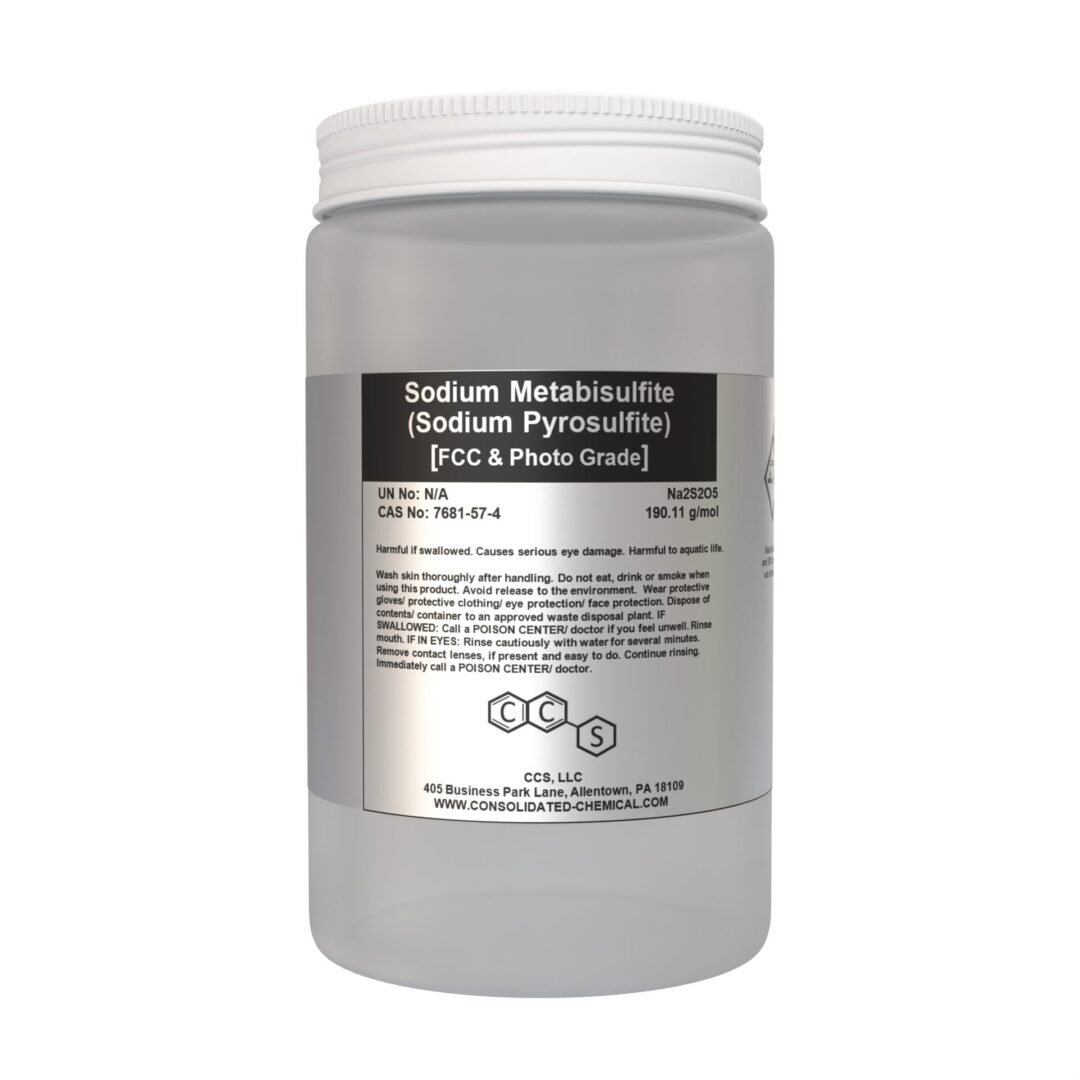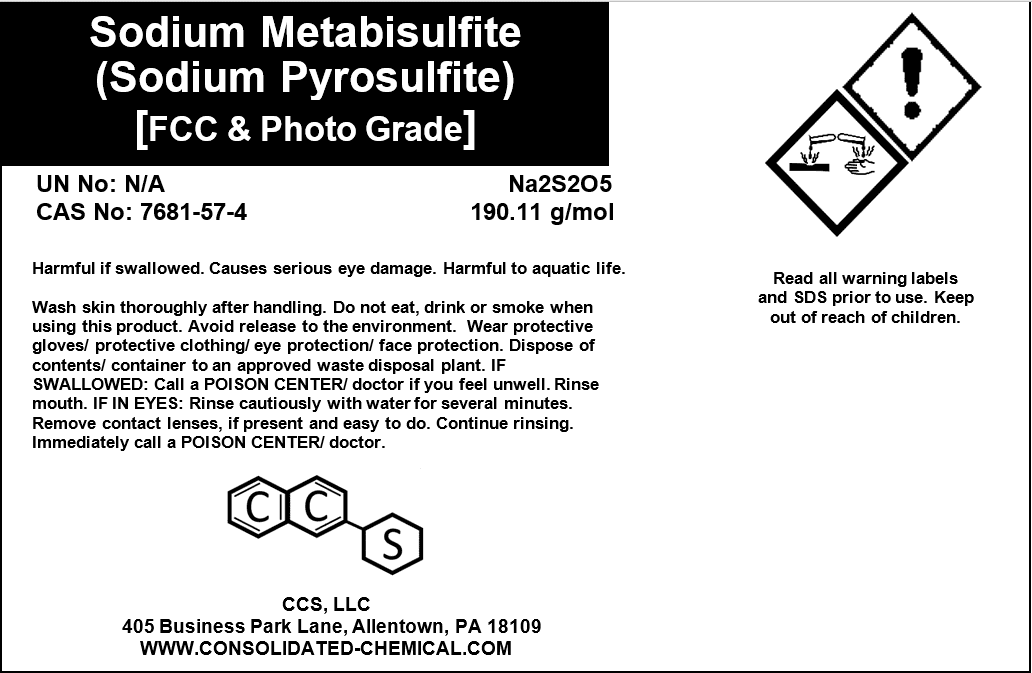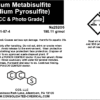Sodium Metabisulfite (Sodium Pyrosulfite) – Photography Grade
$12.99 – $24.99
Chemical Properties
- Chemical Name: Sodium Metabisulfite (Sodium Pyrosulfite)
- Molecular Formula: Na₂S₂O₅
- Molecular Weight: 190.11 g/mol
- CAS Number: 7681-57-4
- EC Number: 231-673-0
Physical Properties
- Appearance: White crystalline powder
- Odor: Slight sulfurous odor
- Solubility in Water: 650 g/L at 20°C
- pH (1% Solution): 3.5–5.0
- Decomposition Temperature: ~150°C (decomposes to release SO₂ gas)
- Density: 1.48 g/cm³
Purity and Composition
- Purity: ≥ 99%
- Insoluble Matter: ≤ 0.05%
- Iron (Fe): ≤ 0.001%
- Heavy Metals (as Pb): ≤ 0.0005%
- Sulfur Dioxide (SO₂): ≥ 65%
Description
Sodium Metabisulfite is a versatile chemical used in various industries for its strong reducing and preservative properties. It is commonly utilized in water treatment, food preservation, and industrial applications. With its high purity and consistent quality, it is a reliable solution for your processing needs.
Applications of Sodium Metabisulfite:
Food and Beverage Industry
- Preservative:
- Prevents microbial growth and spoilage in processed foods.
- Commonly used in dried fruits, vegetables, and juices.
- Antioxidant:
- Prevents browning in food products and beverages by inhibiting oxidation.
- Color Stabilizer:
- Maintains the appearance of fresh produce and seafood during processing.
- Winemaking:
- Acts as a preservative and sterilizer in the fermentation process.
Water Treatment
- Dechlorination:
- Removes residual chlorine in municipal and industrial wastewater.
- Heavy Metal Removal:
- Precipitates and removes heavy metals from wastewater systems.
- Oxygen Scavenger:
- Reduces dissolved oxygen in boiler systems to prevent corrosion.
Industrial Applications
- Textile Industry:
- Used as a bleaching agent in wool and cotton processing.
- Reduces residual dye during textile manufacturing.
- Leather Industry:
- Functions as a reducing agent in leather tanning and dyeing.
- Pulp and Paper Industry:
- Aids in bleaching and as an antioxidant in the paper production process.
Mining Industry
- Cyanide Detoxification:
- Reduces cyanide levels in wastewater from gold and silver mining operations.
- Flotation Processes:
- Enhances the separation of minerals during ore processing.
Photography
- Developer and Fixer Solutions:
- Acts as a reducing agent in photographic processing.
- Aids in stabilizing photographic solutions.
Pharmaceuticals
- Stabilizing Agent:
- Used in some pharmaceutical formulations to maintain chemical stability.
- API Production:
- Involved in the synthesis of active pharmaceutical ingredients.
Cleaning and Disinfection
- Industrial Cleaning:
- Used in cleaning solutions to remove stains and as a mild disinfectant.
- Beverage Equipment Sanitization:
- Sterilizes brewing and bottling equipment in breweries and beverage plants.
Cosmetics
- Antioxidant:
- Included in cosmetic formulations to prevent product oxidation and degradation.
Storage and Handling
- Storage Conditions:
- Store in a cool, dry, and well-ventilated area.
- Keep container tightly closed to prevent moisture absorption.
- Shelf Life: 12–24 months under recommended storage conditions.
- Handling Precautions:
- Use gloves, goggles, and appropriate protective clothing.
- Avoid inhalation of dust and direct contact with skin or eyes.
Safety Information
- Hazards:
- May cause respiratory irritation in high concentrations.
- Reacts with acids to release sulfur dioxide gas.
- First Aid Measures:
- Inhalation: Move to fresh air and seek medical attention if symptoms persist.
- Skin Contact: Wash with soap and water.
- Eye Contact: Rinse with water for at least 15 minutes and seek medical advice.
Additional information
| Size | 250 GRAMS, 500 GRAMS, 1000 GRAMS |
|---|
Related products
-

Ferrofluid Celestial Blue Elegance Display (New & Improved Blue Colored 2oz)
$19.99 Read more -

Aldehyde C-14 (Gamma Undecalactone) | Fragrance Compound
$12.00 – $29.99 Select options This product has multiple variants. The options may be chosen on the product page -

Caprylic Acid Natural (Octanoic Acid) | Food Grade
$12.00 – $32.00 Select options This product has multiple variants. The options may be chosen on the product page -

Caryophyllene Alcohol | Fragrance & Flavor Ingredient
$10.00 – $49.99 Select options This product has multiple variants. The options may be chosen on the product page
SKU: 5358
Categories: Preservative, Uncategorized
Tags: Buy Sodium Metabisulfite Online, Darkroom Chemicals Sodium Metabisulfite, High-Purity Sodium Metabisulfite, Photographic Chemicals Sodium Metabisulfite, Photography Grade Sodium Metabisulfite Supplier, Photography Grade Sodium Pyrosulfite, Sodium Metabisulfite Bulk for Photography, Sodium Metabisulfite Custom Packaging for Photography, Sodium Metabisulfite for Darkroom Use, Sodium Metabisulfite for Developer Solutions, Sodium Metabisulfite for Experimental Photography, Sodium Metabisulfite for Film Development, Sodium Metabisulfite for Fixer Solutions, Sodium Metabisulfite for Photographic Prints, Sodium Metabisulfite for Photographic Processing, Sodium Metabisulfite for Photographic Stabilizers, Sodium Metabisulfite for Sepia Toning, Sodium Metabisulfite Photography Grade, Sodium Pyrosulfite Film Development Chemical, Sodium Pyrosulfite for Archival Photography, Sodium Pyrosulfite for Black-and-White Film, Sodium Pyrosulfite for Image Processing, Sodium Pyrosulfite for Photographic Chemicals, Sodium Pyrosulfite for Photography







